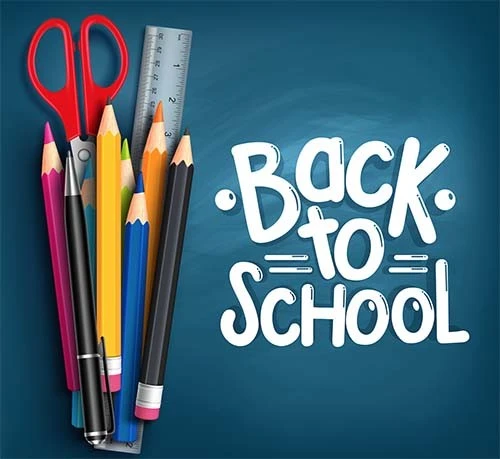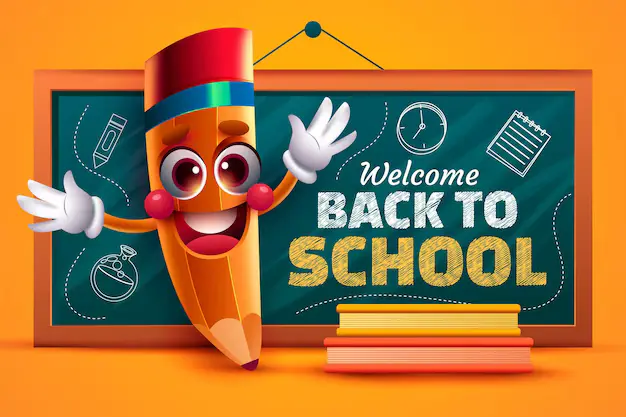The School Bell Rings Again!
Summer break is a magical time—full of relaxation, fun trips, late bedtimes, and screen indulgence. But as the break comes to an end, the transition from lazy summer mornings to structured school routines can be overwhelming—for both parents and children.
Especially for young learners from LKG to Class 5, returning to school can spark anxiety, excitement, or even resistance. That’s why every parent needs a clear back to school after summer break plan that balances emotional, academic, and physical readiness.
This blog covers the top 10 things every parent should do first before school reopens, ensuring your child steps into the classroom happy, healthy, and fully prepared.

1. Re-establish a Sleep and Wake-up Routine
Why It Matters:
During summer vacation, kids often stay up late and wake up late. Sudden schedule changes can affect their mood, focus, and immunity.
What You Should Do:
- Start shifting the sleep schedule gradually at least 7–10 days before school starts.
- Use blackout curtains or white noise machines to help them sleep earlier.
- Wake them up at school-time every morning and get them used to a new rhythm.
Bonus Tip:
Avoid screen time at least 1 hour before bedtime to improve sleep quality.
2. Reset Screen Time Habits
Why It Matters:
Summer usually means more TV, YouTube, gaming, and mobile usage. But back to school means back to focus!
What You Should Do:
- Replace screen time with interactive books, puzzles, drawing, or story-time.
- Set screen time limits and stick to a fixed routine.
- Introduce tech breaks for studying or relaxing instead of using gadgets for everything.
Bonus Tip:
Use parental control apps if needed and encourage digital detox Sundays!
3. Organize School Supplies and Stationery
Why It Matters:
A new school year means new books, bags, uniforms, and stationery. Starting the year with fresh supplies boosts excitement and confidence.
What You Should Do:
- Make a checklist: Books, notebooks, pencil box, water bottle, lunch box, school ID card, etc.
- Label everything with your child’s name.
- Let your child help you pick items like bags or water bottles—they’ll feel more involved.
Bonus Tip:
Create a dedicated school shelf or corner at home for all supplies.
4. Create a Morning Routine Chart
Why It Matters:
A visual morning routine helps young kids follow instructions independently and reduces morning chaos.
What You Should Do:
- Create a visual chart with icons: Wake up → Brush → Bath → Dress → Breakfast → Bag check → Leave.
- Use bright colors and involve your child while making it.
- Stick it near their bed or dressing area.
Bonus Tip:
Reward them with stars or stickers for completing the routine each morning.
5. Visit the School in Advance (If Possible)
Why It Matters:
For new students or those moving to a new grade/classroom, visiting the school helps reduce anxiety.
What You Should Do:
- Attend orientation sessions if the school conducts them.
- Visit the classroom, playground, or bus stop together.
- Talk about the fun things they’ll do and friends they’ll meet.
Bonus Tip:
If physical visits aren’t allowed, explore the school’s website or photos with your child.
6. Plan Healthy Tiffin Options for the Week
Why It Matters:
A nutritious lunch keeps kids energized and helps with focus during the day.
What You Should Do:
- Plan a 5-day tiffin menu in advance to avoid morning stress.
- Include fruits, whole grains, protein (eggs, paneer, sprouts), and healthy treats.
- Avoid junk food, too much sugar, and messy items that spill.
Sample Menu:
- Monday: Vegetable sandwich + apple
- Tuesday: Poha + banana
- Wednesday: Paneer paratha + cucumber sticks
- Thursday: Idli + coconut chutney
- Friday: Pasta with veggies + orange slices
7. Talk About School Positively
Why It Matters:
Children pick up on parental attitudes. If you talk about school as a burden, they’ll feel stressed.
What You Should Do:
- Use positive words: “You’re going to have so much fun!”, “Can’t wait to hear what you learn!”
- Share stories from your own school days.
- Help them set one simple goal: make one new friend, read one new book, etc.
Bonus Tip:
Avoid saying things like “back to the grind” or “now the fun is over.”
8. Do a Dry Run of the School Day
Why It Matters:
A trial run helps both you and your child identify any glitches before the real day.
What You Should Do:
- Choose a weekend to act out a school day: wake up, get ready, breakfast, pack bag, and pretend school.
- If taking a school bus or van, confirm pick-up time and test it.
- Practice wearing the uniform, tying shoes, using lunch boxes, and washing hands.
Bonus Tip:
Make it fun by timing each activity like a game!
9. Boost Emotional Confidence
Why It Matters:
Children, especially LKG to Class 5, may face fear, separation anxiety, or low self-esteem.
What You Should Do:
- Listen to their fears without dismissing them. (“It’s okay to feel nervous. I’m here.”)
- Use affirmations: “You are brave. You’re ready. You’ll do great.”
- Role-play classroom or playground scenarios: talking to friends, asking the teacher for help, etc.
Bonus Tip:
Slip a small note in their lunch box with words like “Mom and Dad are proud of you!”
10. Set Clear Communication With Teachers
Why It Matters:
A good parent-teacher relationship is crucial for a child’s academic and emotional development.
What You Should Do:
- Attend Parent Orientation or PTA meetings.
- Join official class WhatsApp groups (not gossip groups).
- Let teachers know if your child has any allergies, learning challenges, or behavioral concerns.
Bonus Tip:
Don’t over-monitor or micromanage. Trust the process and keep communication respectful.
Back to School: Common Questions from Parents
How early should I start preparing my child for school after summer break?
Answer: Ideally, start the transition 7–10 days before school starts to allow the child to adapt gradually.
My child cries before going to school. What should I do?
Answer: Stay calm, reassure them with hugs and affirmations, and avoid overdramatizing the goodbye. Kids usually settle within a few days.
Can too much summer relaxation impact academics?
Answer: It can, but children are resilient. Gentle reading, puzzles, and daily conversations help rebuild learning habits quickly.
Should I give extra tuition before school begins?
Answer: Not necessary for young children. Focus on revision and practical learning like storytelling, drawing, or counting games.
Final Thoughts: Let This Year Be Different—in a Good Way!
Back to school isn’t just a checklist—it’s an emotional, academic, and physical reboot for your child.
Whether your little one is stepping into LKG for the first time or returning to familiar hallways in Class 5, your support, planning, and positivity can make all the difference.
Let’s create a happy start to the school year—one tiffin, one bedtime story, and one smile at a time.
Read about 10 Foods That Are Harming Your Kid’s Brain Health.
For more such lifestyle related updates follow Popnewsblend.

Hi, I’m Prashant Jain — a curious soul, storyteller, and content creator at heart.I’ve always been drawn to the world of entertainment, travel, sports, health & lifestyle — not just as a writer, but as someone who genuinely lives these experiences. Whether I’m binge-watching the latest OTT series, exploring offbeat spiritual destinations in India, or diving deep into wellness routines and cricket match insights, I love sharing what I discover with like-minded readers.
PopNewsBlend is my way of blending personal journeys with meaningful stories — ones that inform, inspire, and keep you ahead of the curve. Everything I write comes from real observations, hands-on experiences, and a deep passion for understanding the world around us.
Discover more from Popnewsblend
Subscribe to get the latest posts sent to your email.








This looks coming from a real life experience. Very informative and non complicated.
In addition I have also noticed making kid part of discussion of next days lunch box plan also helps a lot. Usually lunch box comes empty. Give them choices to pick from stuff that’s easy for you too. Trust me works wonders .
Pingback: Monsoon and School Reopening Guide: Keep Kids Healthy & Happy
Pingback: How to Reduce Screen Time for Kids: Effective Tips for Healthy Digital Habits
Pingback: 10 Brain Boosting Foods to Pack in Your Child Lunchbox